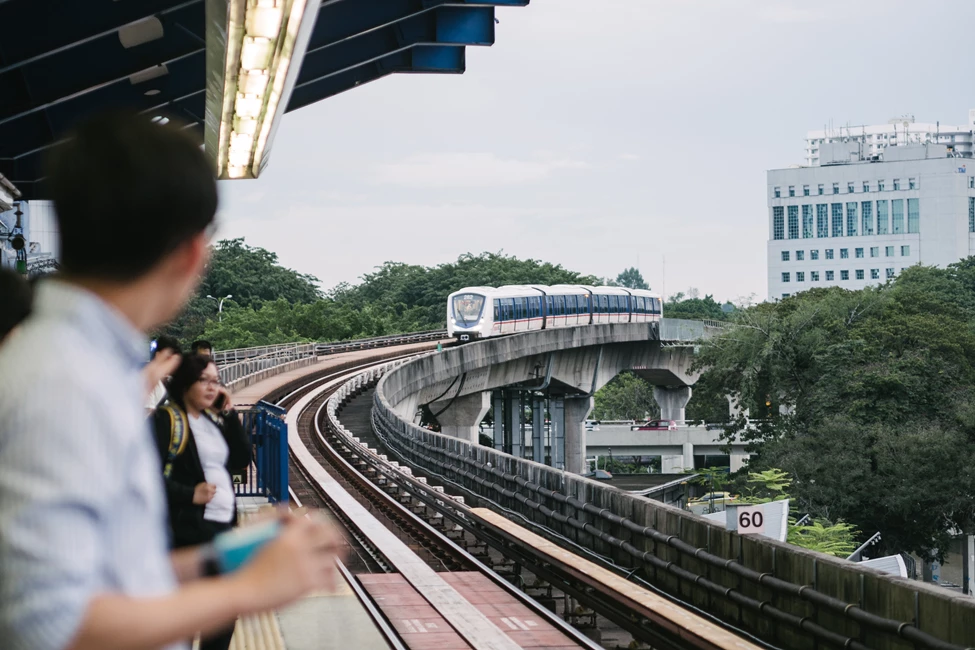
Over the years, Malaysia has demonstrated great improvements in enhancing upward social mobility as the country continues to advance toward becoming a developed nation. However, this success has not been evenly distributed among the population. A 2016 Khazanah Research Institute study found that 24% of children born to low-skilled parents in Malaysia remained low-skilled as adults. Likewise, 46% of children born to parents in the bottom 40% of the national income distribution remained in the bottom 40%.
As such, one important factor that can potentially contribute to improving socio-economic standing is access to transportation. Transportation facilitates day-to-day activities such as getting to jobs, schools, and healthcare facilities among others. Having a good public transportation system in place in urban areas is especially important as Malaysia is 75% urban and becoming more so. Without reliable transportation, low-income urban households are at a disadvantage in accessing a wider range of opportunities, which could potentially hinder them from moving up the socio-economic ladder.
In the bustling city of Kuala Lumpur, public transit serves as a viable solution for low-income households to reduce limitations in physical mobility. To better understand whether urban low-income communities in Kuala Lumpur have adequate access to public transportation, we randomly selected 30 public housing units and used a 15- and 30-minute walking distance as the benchmarks for proximity to public buses and rail lines. This walking distance was simulated with ArcGIS software using coordinates from Google Maps. One caveat of this measurement is that it may not be safe to walk which cannot be measured through a preliminary spatial examination.
The bus stops above represent the bus stops within close proximity to the public housing units that have been randomly selected. These do not represent the full bus network in Kuala Lumpur.
A preliminary spatial analysis of access to public transit from low-cost public housing in Kuala Lumpur is encouraging. Our findings include:
- All 30 of the randomly-selected public housing units are within a 15-minute walking distance to public bus services.
- Seventeen public housing units are within a 15-minute walking distance to a Mass Rapid Transit (MRT), Light Rail Transit (LRT), Monorail, and/or Malayan Railway (KTM) station. Eight of the remaining 13 public housing units are within a 30-minute walking distance to one or more of these train lines.
- Five of the 30 public housing units do not have any rail stations within a 30-minute walking distance but are within a 15-minute walking distance to a bus stop.
- Urban low-income residents in Kuala Lumpur may be benefiting from the public transportation network, given that public buses and train lines are placed within close vicinity of public housing areas. However, this study only focuses on assessing the proximity of public transportation to low-cost public housing units in Malaysia’s capital. As such, more research should be conducted in Kuala Lumpur and other cities to examine the access of poorer communities to public transportation for inclusive development in Malaysia. Further analysis could also potentially include using “big-data” to simulate travel times by public transit from all neighborhoods to the city’s key job centers, traditional markets, training centers, public hospitals, and top schools to help pinpoint areas that are presently under-served by the public transport network (as is currently being done by a World Bank team using Google Maps data for Jakarta).
- Even though the randomly selected public housing units in Kuala Lumpur are all within a 15-minute walking distance to the nearest form of public transportation, true access also requires affordability. In 2017, transportation was one of the main contributing factors to the rising cost of living in Malaysia. This has hit poorer populations the hardest as transportation is often a big household expense. The preliminary analysis here only addresses the physical distance of low-cost public housing units to bus stops and transit lines. Further research needs to be done on the affordability of public transportation fares for urban low-income Malaysians to ensure that they can reap the benefits of public transportation for upward mobility.
Better planning to connect public housing areas to accessible and reliable public transportation is vital to ensure that the urban poor have greater access to socio-economic opportunities. As Malaysia sets its sights on becoming a developed and inclusive nation, this needs to be put at the forefront of urban development priorities. Better access to public transportation for urban poor communities could be a big step towards inclusive growth.



Join the Conversation